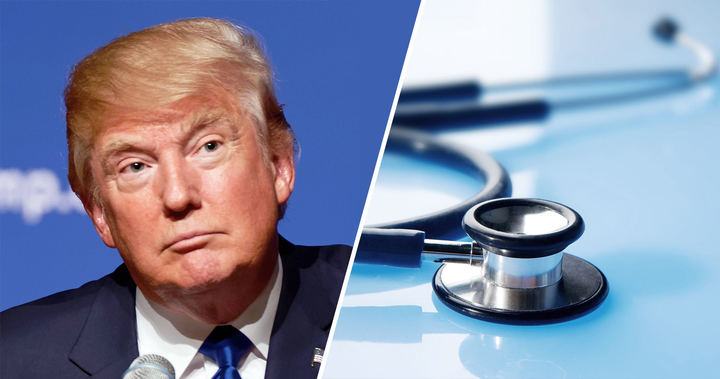Donald J. Trump is the new President of the United States. After a long and hard fight, the Republican billionaire managed to defeat Secretary Hillary Rodham Clinton. Change is now coming to America. As the nation prepares to move from Democrat to Republican, we have to take a closer look at what the new administration proposes. This article will analyze the pros and cons of the new US President’s plans for healthcare.
Donald Trump has already published the plan for his healthcare reform on his website. The plan includes seven major parts.
1. Completely repeal Obamacare
The Republicans have been against the Affordable Care Act from the beginning. Now, they have a chance to repeal it and to replace it with something new.
While it’s true that no person should be required to buy insurance if he or she does not want to, we still have to remember that insurance is one of those things that is better to have and not need, than to need and not have at all. The numbers have so far shown that about 20 million Americans have gained health insurance coverage thanks to Obamacare. They also show that, if Obamacare goes away, about 25 million people stand to lose their health insurance.
It’s hard to pick a side when it comes to Obamacare. On the one hand, repealing it would mean less taxes on businesses across the country, lower costs for healthcare premiums, and no more state and taxpayer spending for the act. However, it also comes with some hard to ignore cons. In addition to the millions of Americans who will lose their healthcare benefits, repealing the act could also cause many insurance companies to become unregulated. Right now, Obamacare provides regulation to insurance companies. It makes sure that they spend at least 80% of the money they take in from premiums on health care costs and quality improvement activities, in addition to preventing insurers from dropping beneficiaries from coverage for preexisting conditions or illnesses.
Obamacare also allows US residents under 133% of the poverty level to gain Medicaid coverages. Many under-insured low to middle income Americans could lose this important help if the act is repealed.
2. Allow the sale of health insurance across state lines
This is one of the most interesting proposals of Donald Trump’s healthcare reform. As long as the plan purchased complies with state requirement, any insurance company will be able to sell their products in any state. This is a great way to create competition and reduce costs. Therefore, you really can’t say anything bad about this proposal.
3. Price transparency for all healthcare providers
Doctors, clinics, hospitals and other healthcare providers will be required to practice full transparency when it comes to prices. This will allow individuals to shop freely and find the best possible prices. It is another good idea. Because the market works better if consumers are well informed.
4. Allow individuals to deduct insurance premiums from their tax returns
In many cases, you can actually already deduct your health insurance. If you are self-employed, for example. And don’t forget that most premiums through employers are already paid with pre-tax money. This is the same as deducting them. Donald Trump needs to share more details about this part of his healthcare reform.
5. Allowing individuals to use Health Savings Accounts
According to Donald Trump’s healthcare reform, contributions into HSAs should be tax-free and allowed to accumulate. Additionally, the accounts would become part of the estate of the individual, and be passed on to their heirs, without the fear of any death penalty. Donald Trump expects these plans to prove very attractive to healthy young people who can afford insurance plans with high deductibles.
What’s confusing about this part of the plan is that HSAs have been around for some time now. And contributions into them are already tax-free and allowed to accumulate. According to a census from America’s Health Insurance Plans, last year, almost 19.7 million Americans already had HSAs.
The new administration needs to provide more information about this part as well.
6. Block-grant Medicaid to the states
Donald Trump believes that the state governments “know their people best and can manage the administration of Medicaid far better without federal overhead.” That’s why he proposes the allocation of block grants by the federal government.
However, the Urban Institute announced this September that block grants would only create huge disparities in spending from state to state. As a result, a Medicaid patient in one state would be valued at a higher level than another patient in another state. Not only that, but taxpayers would end up paying even more if states expanded Medicaid coverage by broadening eligibility.
7. Remove barriers to entry into free markets for drug providers offering safe, reliable and cheaper products
Although it probably goes without saying, the US pharmaceutical industry is definitely against this proposal. The idea is not really popular with most Republican lawmakers. Consequently, it failed repeatedly in Congress, most recently in 2012. If the new administration manages to see it through, Americans will stand to gain, as they will have more options to choose from.
Final word
The Presidential race has just ended and the two candidates are probably resting now. This long journey has now come to an end. The only thing we can do now is wait and see what the future brings.
However, no matter what comes our way, we will be able to handle it better if we stay informed. Fortunately, we live in the age of information, and we are able to find out all we need to know about every little thing, including our new US president’s plans for healthcare and more.







